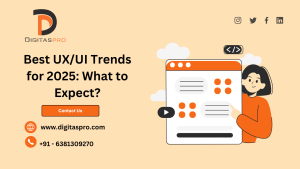LinkedIn is a powerful platform for professionals, job seekers, and businesses alike. To fully leverage LinkedIn, it’s essential to understand how its algorithm works. In 2024, the platform continues to evolve, prioritizing meaningful interactions, relevant content, and network engagement. Let’s break down how LinkedIn’s algorithm works and how you can take advantage of it.
1. LinkedIn’s Primary Focus: Engagement and Relevance
At the heart of LinkedIn’s algorithm is engagement. It prioritizes content that sparks conversation and interaction. LinkedIn measures engagement through:
- Likes
- Comments
- Shares
- Reactions
- Clicks
The more engaging your content is, the more LinkedIn will push it to other users. However, the content must also be relevant to your network, meaning the platform considers the relationship between the poster and the viewer.
Pro tip: Create content that invites participation by asking questions, encouraging comments, or sharing industry insights that people feel compelled to engage with.
2. The Content Review Process: How LinkedIn Filters Posts
When you post content, LinkedIn’s algorithm goes through several stages:
- Initial Filtering: The system quickly assesses whether your post is spam, low quality, or valuable. Spam or low-quality posts are deprioritized.
- Engagement Testing: The post is shown to a small segment of your connections. If they engage with it positively, the algorithm pushes it out to a broader audience.
- Content Scoring: Based on engagement rates, your post is given a score. Higher scores ensure more exposure.
Pro tip: Make your posts concise, professional, and engaging. Posts with visuals, such as images and videos, also tend to perform better.
3. Factors that Influence the LinkedIn Algorithm
Several factors affect how LinkedIn’s algorithm promotes content. Understanding these factors helps you tailor your content strategy:
- Relevancy: LinkedIn considers how relevant a post is to the user based on their interests, job role, and prior interactions with similar content.
- Timeliness: Posts that are fresh tend to get more visibility. Consistency in posting at peak times is key to making the most out of your content.
- Engagement Pods: While some people join engagement pods to artificially boost likes and comments, LinkedIn has started penalizing these activities. Organic engagement is far more effective in the long run.
- Content Type: Native content, like text, images, and videos uploaded directly to LinkedIn, performs better than external links. While posting links is common, too many may reduce your overall reach.
Pro tip: Use polls, videos, and infographics. These formats tend to get more interactions than text-only posts.
4. LinkedIn’s Dwell Time: Measuring User Interest
In recent updates, LinkedIn has introduced dwell time as a key metric. Dwell time refers to how long a user spends on a post before scrolling past it. The more time users spend on your content, the more the algorithm will push it to others. This makes the quality of your opening lines crucial in hooking the audience.
Pro tip: Start your posts with a bold statement or intriguing question to capture attention and keep users engaged longer.
5. How Connections and Network Impact Your Reach
The strength of your connections plays a significant role in determining how widely your content is seen. LinkedIn gives priority to content from:
- First-degree connections (people you know directly),
- People who regularly engage with your content,
- Members of groups you’re active in.
To expand your reach, it’s essential to grow your network and interact with your connections’ posts.
Pro tip: Build a habit of interacting with other posts and expanding your network to include professionals aligned with your industry or niche.
6. Posting Frequency: How Often Should You Post?
Consistency is key, but LinkedIn doesn’t favor over-posting. Posting once or twice a day is often enough to keep you visible without overwhelming your audience.
Pro tip: Aim for a balance. Posting at least 3-5 times a week helps maintain engagement without flooding your followers.
7. Content Suggestions: What Types of Content Perform Well?
The following content types are favored by the LinkedIn algorithm:
- Industry news and insights: Sharing the latest trends and data-driven insights can get your post noticed by others.
- Personal stories and experiences: Personal posts humanize you and resonate with your audience.
- Company and product updates: Let your followers in on behind-the-scenes content or product releases.
- Polls and questions: These encourage quick interactions and boost your visibility.
Pro tip: Use a mix of content types to keep your feed engaging and diverse.
How to Boost Your LinkedIn Presence in 2024
- Engage regularly: Comment on others’ posts and start meaningful conversations.
- Build a strong network: Continuously expand your connections with relevant professionals in your industry.
- Use hashtags smartly: Limit hashtags to 3-5 per post for maximum impact without looking spammy.
- Focus on quality content: Aim to share content that adds value, educates, or inspires.
Conclusion
Understanding the LinkedIn algorithm is essential for maximizing your visibility on the platform. By focusing on engagement, relevance, and content quality, you can boost your LinkedIn presence, drive conversations, and achieve your professional goals in 2024. Stay consistent, monitor your results, and adjust your strategy based on what works best for your audience.


